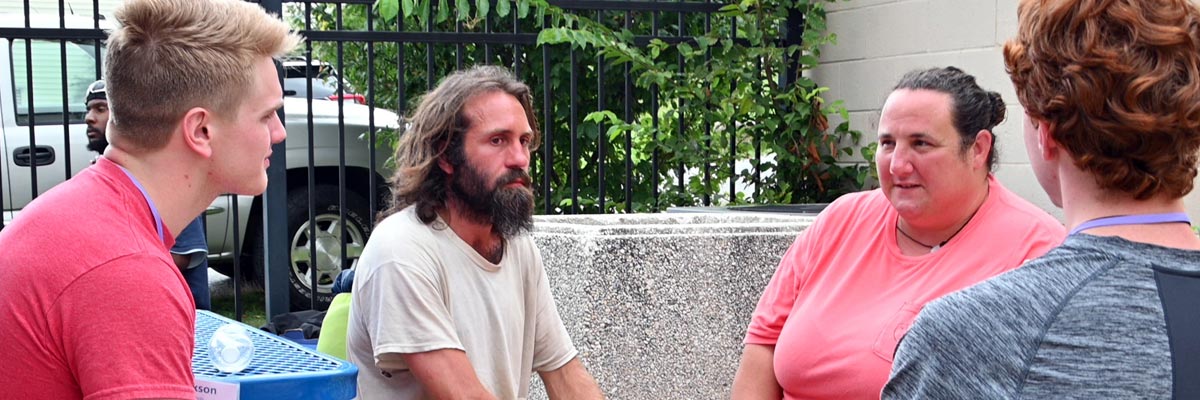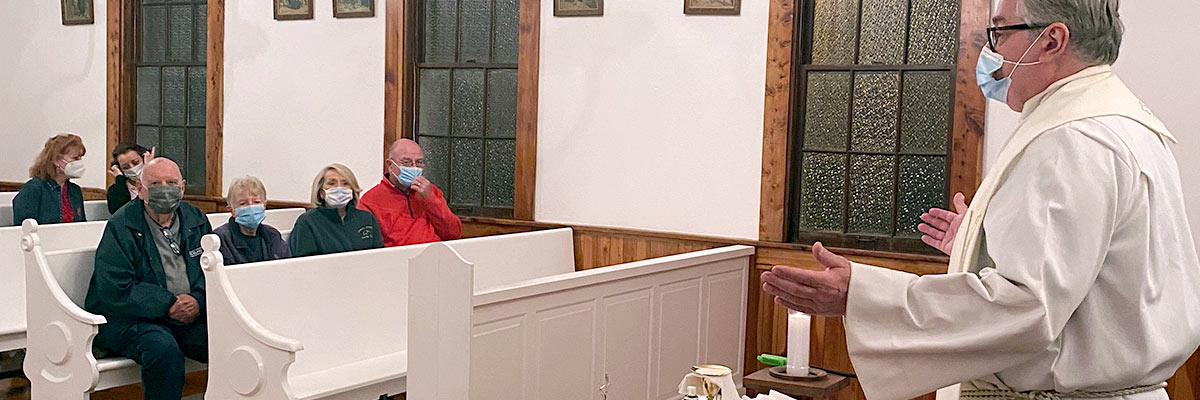Official Website of the
Catholic Diocese of Little Rock
Scrutinies also us to see sinfulness in our lives
Published: February 26, 2005
By Sandy Compas
On the third, fourth and fifth Sundays of Lent, we celebrate the scrutinies — minor rites in the process of Christian initiation.
Through the scrutinies, the elect (those preparing for baptism) are led to deeper awareness of the reality of sin in their lives and God’s gift of grace. We, too, are called to conversion. We offer the elect our prayerful support. With them, we examine the ways we compromise our discipleship and the grace God offers us.
All of the scrutinies are drawn from John’s Gospel. Here, as in our lives, we find much irony. Every character and symbol is multi-layered. They call us to take a long, careful look — to see how we are quenching our thirsts, with the Samaritan woman; to see where we are blind, like those surrounding the beggar; and to see where we are entombed, like Lazarus. The scrutinies draw us toward baptism, inviting us from thirst to living water, from darkness to light, from death to life.
Thirst and water, we all have an inkling of what it means to thirst. The Israelites (Exodus 17:3-7) fear that they will indeed die of thirst. The first reading notes that they “grumbled,” which seems to imply that they were whining, exhausted and grumpy from their sojourn. But for people who face the desert, dying of thirst is a very real possibility.
There are other kinds of thirst that lead to other sorts of death. We see such thirst in the account of the Samaritan woman who encounters Jesus at the well. Her thirst is, at heart, a spiritual thirst and she is in danger of spiritual death.
Paul notes (Romans 5:1-8) that the love of God “has been poured into our hearts through the Holy Spirit.” Here again, the language of water. God’s love is like water. Once it begins to flow, there is no holding it back. It fills every crevice of whatever receives it. It cannot be reversed. The waters of baptism immerse us in God’s overflowing, unending love.
A recent soft-drink commercial encouraged viewers to “Obey your thirst.” Do we recognize the spiritual nature of our own deepest longings? How do we seek to quench them? Are we willing, like the Samaritan woman, to “obey our thirst” for God?
Next Sunday we hear about a blind beggar whose sight Jesus restores. Like the Samaritan woman, whose conversation with Christ reveals and strengthens her faith, this man grows more courageous when confronted by the Pharisees. The irony is that as he owns his sight, they reveal their own willful blindness. How clear is our eyesight? Do we have the courage to truly see what is? Or do we cling to our own vision, despite all evidence to the contrary, desperately claiming to see?
The third Scrutiny focuses on Lazarus, who is restored to life after four days in the grave. His whole community comes to deeper faith through the action of Jesus, who says, “Unbind him and let him go free!” What about us? Would we rather remain entombed in our safe, comfortable routines, our sins, our failings? Or are we willing to fully embrace Christ’s gifts of life and freedom, with all their challenges?
As we enter into the scrutinies, let’s pray for the courage to look long and hard into our hearts, so that at Easter we may “know him in the breaking of the bread, and follow him in his risen life.”
Sandy Compas is associate director for the diocese’s Office of Religious Education and Christian Initiation.









